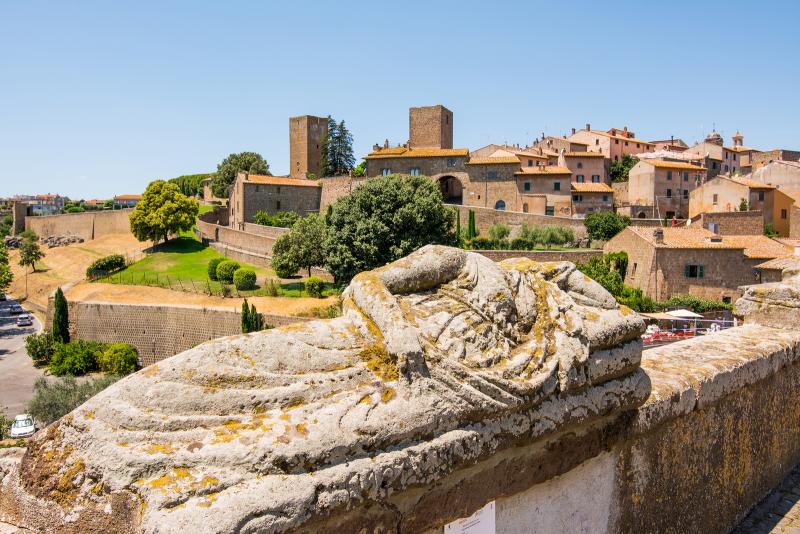If you’ve heard anything at all about the ancient Etruscans of central Italy, you probably know that they are considered “mysterious.” Countless books, courses and documentaries focus on the theme of the “mysterious Etruscans.”
The reality is that we know quite a lot about the Etruscans, those ancient people who occupied a swath of central Italy corresponding roughly with Lazio, Tuscany, and Emilia-Romagna. In many ways, they aren’t so mysterious at all. This is particularly true of Etruscan women, who — by ancient standards, at least — have left especially compelling material evidence for us to consider.
The ancient Etruscan culture emerged around the 8th century BCE and persisted through the period of the Roman conquest. People often say that the Etruscans formed a kind of cultural “bridge” between the Greeks and Romans. While that is true to some degree, I believe that the Etruscans deserve to be studied deeply and widely in their own right. Their culture is unique in so many ways, and stands on its own even between the dominant cultures of ancient Greek and Rome. This is especially true when it comes to the history of Etruscan women.
In fact, if we are to believe the archaeological and written evidence related to Etruscan women, then it’s clear that Etruscan women were distinct among women of the ancient Mediterranean. Here are a few reasons how:
A sense of equality
First, Etruscan women may have enjoyed more equal status with men than in other ancient cultures. That seems like a bold claim. How do we know this? Let’s look at a few pieces of evidence.
Funerary customs
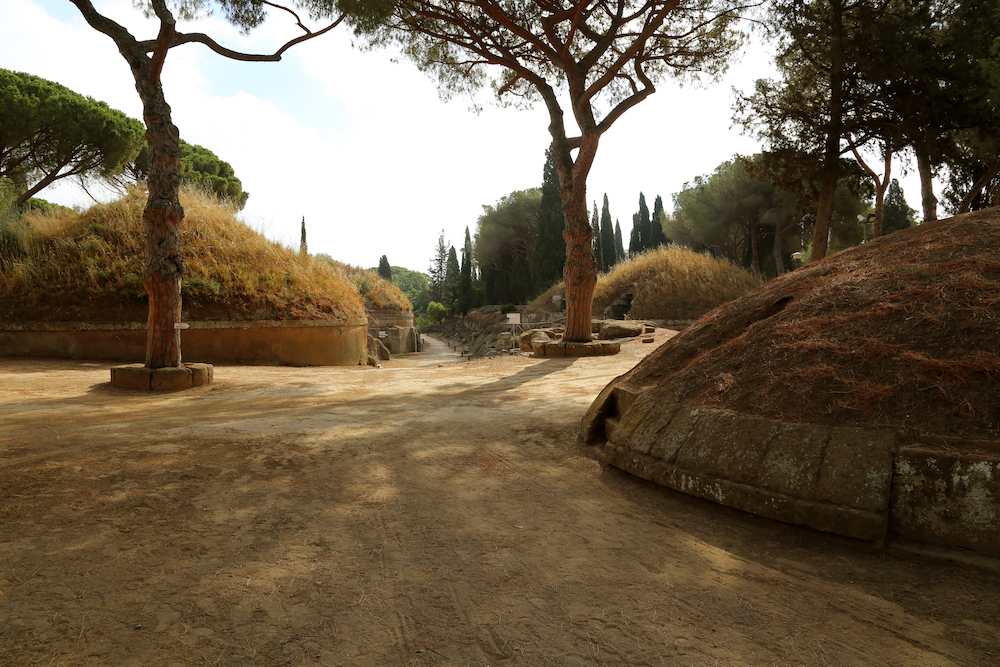
In Etruscan culture, the necropolis — or city of the dead — was a parallel universe to the city of the living. In Etruria, people buried multiple generations of the same family in one tomb; the tomb became sort of a multigenerational family “home.” Tombs were filled with bodies and grave goods over time, from urns to sarcophagi, and troves of the family’s most precious earthly belongings — everything from jewelry to pottery, clothing, and other possessions.
This practice of burying the whole extended family together sets the Etruscans apart from ancient Greeks and Romans, who buried only the immediate family together. I find this practice fascinating, since it shows that strong multigenerational family ties—such an important foundation of Italian culture—have very ancient roots.
Inside the tombs, there might be multiple chambers. Husbands and wives usually occupied the same chamber, and were often laid out side by side on beds that were excavated from porous, volcanic tufa stone. Sometimes, the male’s funeral bed is demarcated with a circle, the woman’s with a triangle. Usually, the two beds are more or less equivalent in size and placement. In studying the ancient Etruscans, so much of what we learn about the culture of the living comes from the culture of the dead—since that’s what’s been left behind to study. In funerary practices, at least, we see that wives enjoyed equal treatment to the husbands.
Banqueting
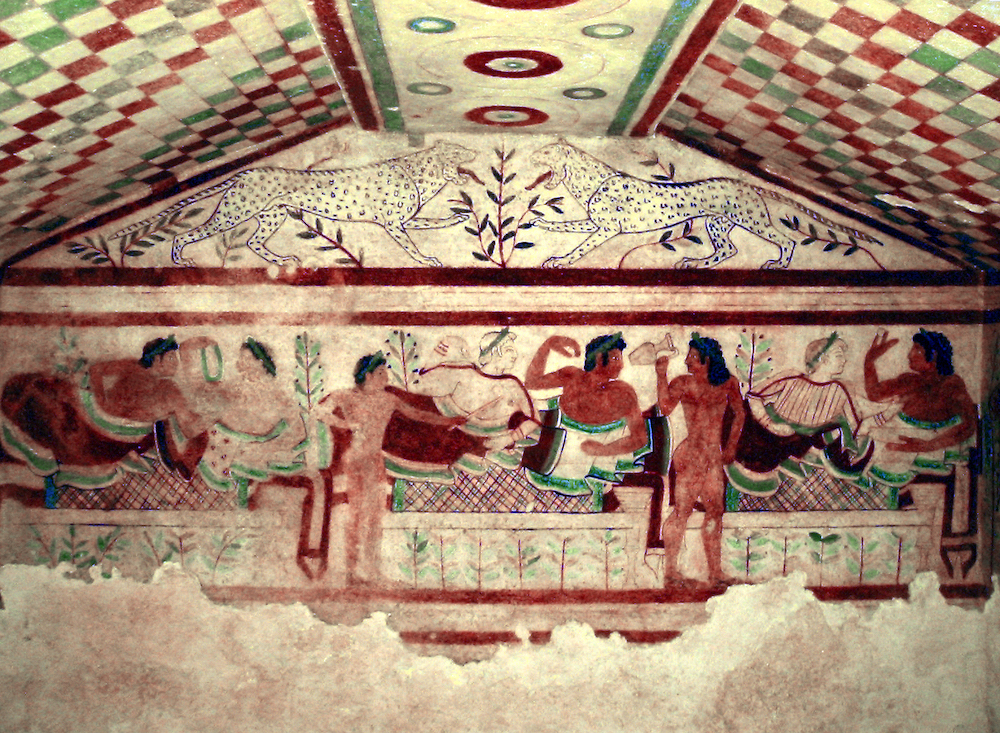
Another place where we see relatively equal treatment among men and women is in the imagery of banqueting. Banquets and festive dining are frequent subjects in Etruscan sculpture and painting.
Contemporary Greek writers tell us that the Etruscans were noted for their wealth, their feasts, and for an unbridled enjoyment of earthly pleasures. A Greek historian by the name of Theopompus of Chios, living in the 4th century BCE, recorded what he claims were his own observations of the behavior of Etruscan women.
It turns out that Thompompus’ report of Etruscan women was not just highly critical, was scathing. To start, Theopompus of Chios tells us that Etruscan women “were expert drinkers and very good looking.” He also complains that Etruscan women “dine not with their own husbands, but with any men who happen to be present.”
In Greek culture, women were not supposed to drink or dine with men other than their fathers, brothers, and husbands. The Romans tended to follow this custom. But in Etruria, things were apparently different. The ancient Greeks were known for their symposia, which were essentially adult male drinking parties. Women were not invited or welcome at these events. But it seems that in the Etruscan culture, women played an active part in social dining events.
It’s likely that banqueting was a central part of the Etruscans’ funerary rituals, and it’s a frequent theme of Etruscan sarcophagus decoration. The amazing “Sarcophagus of the Spouses” (sarcofago degli sposi) is a perfect example of equal treatment of men and women in the imagery of banqueting. (Read more about this sarcophagus here.)
This work stands as a symbol for the festive, fun-loving spirit of the Etruscan culture of the sixth century BCE. I think it also conveys the idea that Etruscan couples might have been relaxed and easy with one another, that they might have participated in pleasurable activities together—dining, hosting guests, sharing food and drink or a laugh with visitors. These two, at least, seem ready to celebrate together for all eternity.
A variety of roles
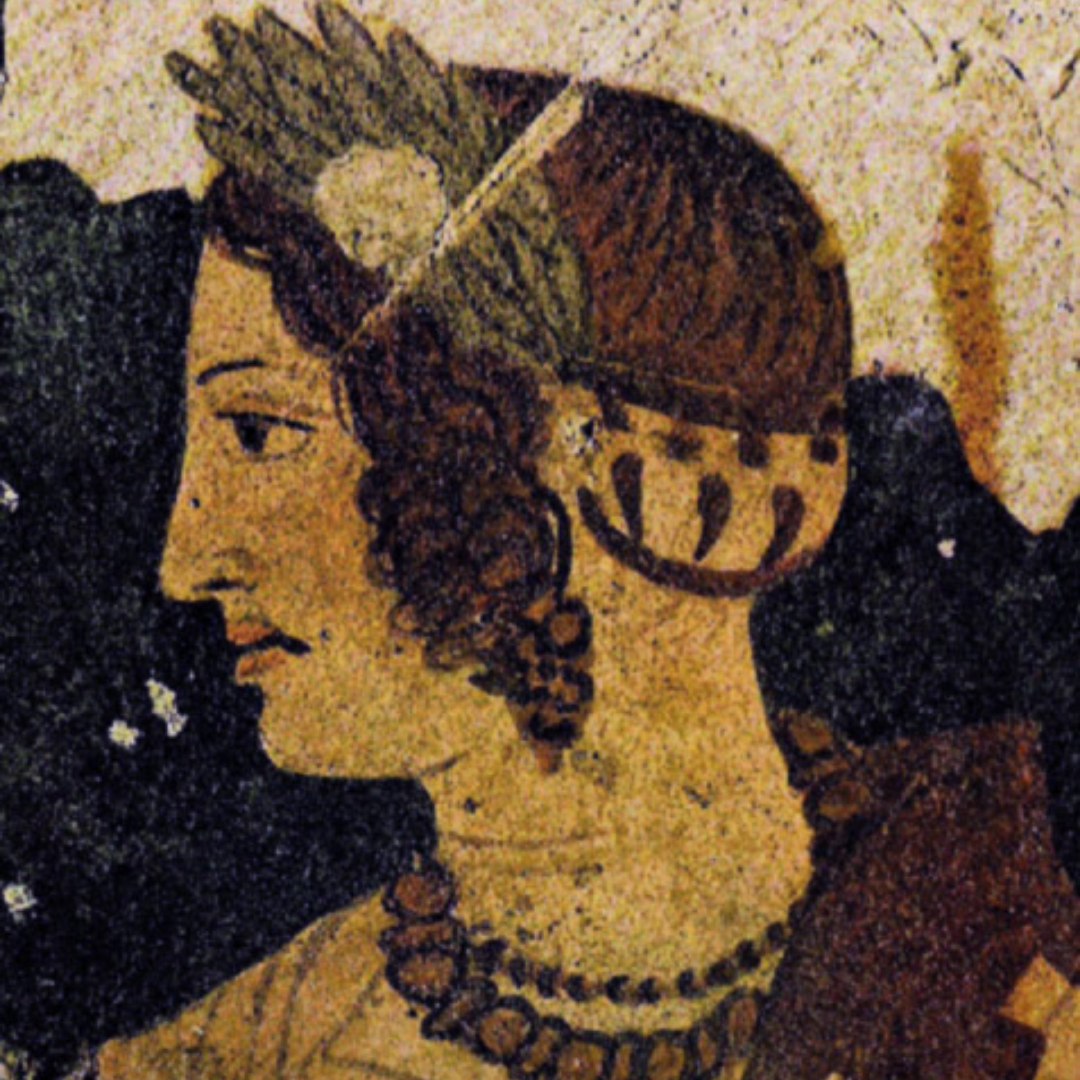
As you might imagine, there is a lot of material evidence of Etruscan women in the domestic sphere. For example, there are many remains of spools, spindles, pins and other implements used in the working of textiles. In Etruscan tomb painting, we see women in a wide variety of activities associated with banqueting, including dancers, musicians, spectators, cooks, servers, athletes and so on.
There is also a variety of imagery depicting themes and myths pertaining to marriage and childbirth, especially on bronze handheld mirrors, which were popular gifts for women to mark the occasion of marriage and childbirth. And in small, terracotta votive statues, we even have depictions of breastfeeding, a type of imagery that is extremely rare in Greek and Roman art.
Etruscan women are also depicted frequently within a religious context. The Etruscans were renowned in ancient times for their knowledge of the spiritual world. The Romans held Etruscan religious advisers in high esteem, and consulted them regularly on matters of politics and military strategy. The Etruscans had their own female deities, and they also readily incorporated female Greek deities into their existing pantheon.
All the cultures of the ancient Mediterranean had female religious leaders like priestesses and vestal virgins. In Greek society, these female religious figures tended to be more hidden away, removed from public-facing duties.
Etruscan priestesses and oracles, on the other hand, seemed to play more of an outward-facing role. For example, they could be agents of political change in approving or giving their blessing to newly elected kings. In Etruria, there are also examples of priestesses buried together in the same tomb rather than with their families of origin, as at the Tomb of the Inscriptions at Vulci. This kind of eternal sisterhood is fascinating and also unusual in the ancient world.
Women in the public sphere
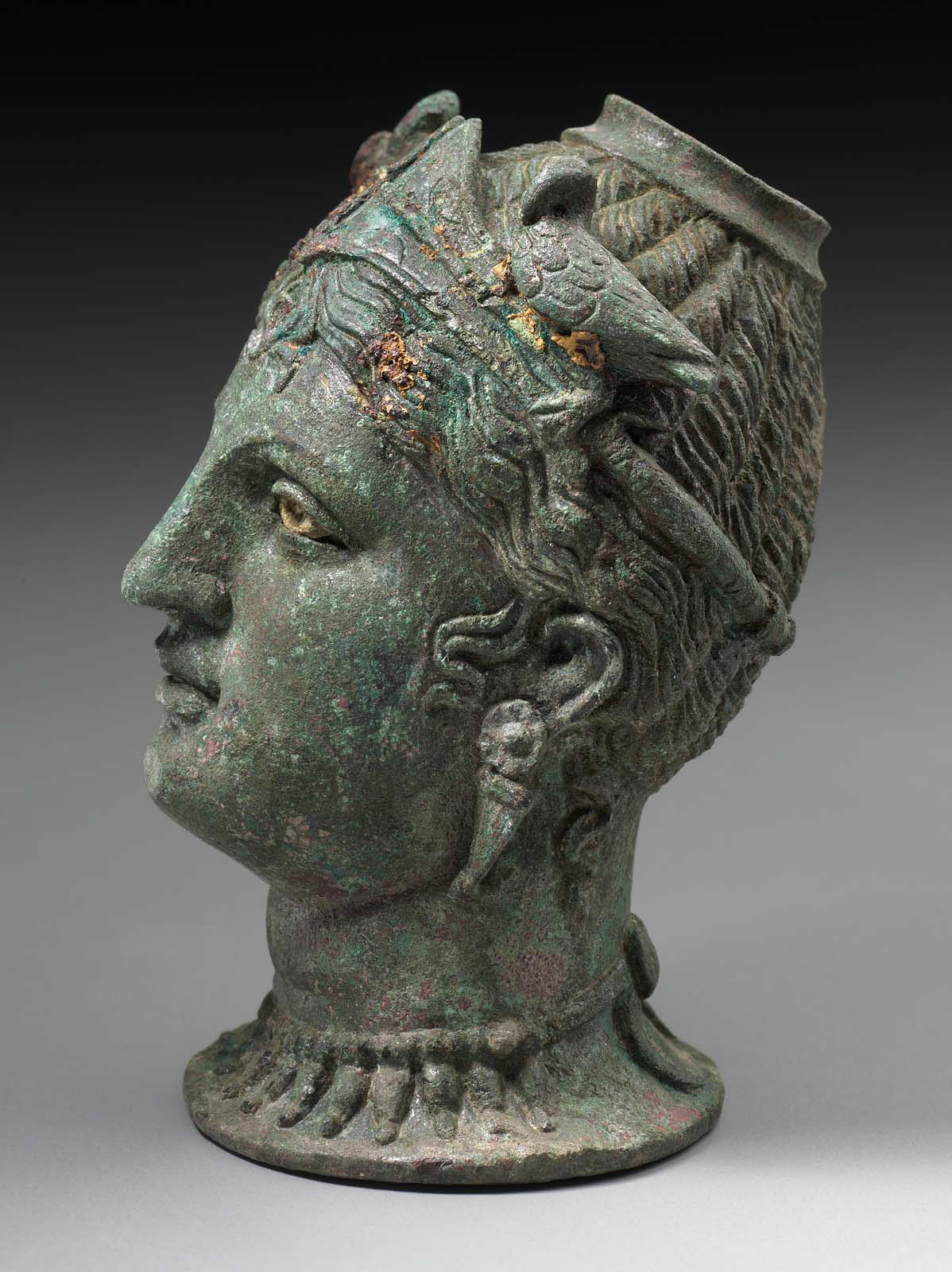
It’s the more public face of Etruscan women that seems to have shocked Greek writers like Theopompus of Chios the most. In fact, it seems that Greek and Roman women led much more private lives. They tended to be confined to the home and to women’s work. Even elite women did not have particularly public roles. In Greece and Rome, flaunting female beauty in public was not readily acceptable.
Theompompus of Chios was scandalized by what he described as the depraved behavior of Etruscan women, but I wonder if it wasn’t so much that they took care of their bodies that was so remarkable, but that they were confident and very visible in public roles. Based on the copious amounts of jewelry and cosmetics containers discovered in the tombs of high-ranking Etruscan women, we can also assume that Etruscan women took pride in adorning themselves.
From Etruscan inscriptions, we learn that Etruscan women could inherit property and even retained their own surnames. This is different from Greece and Rome, where women took their husband’s name or adopted a feminized form of their husband’s name.
Etruscan women may also have been literate, if we believe that they could have read the vast numbers of objects with inscriptions that were used in a feminine context, like bronze mirrors, jars for perfume and oils, and containers for accessories and cosmetics. Perhaps they also wrote on the ceramic tablets that were buried along with them.
A toast to Etruscan women
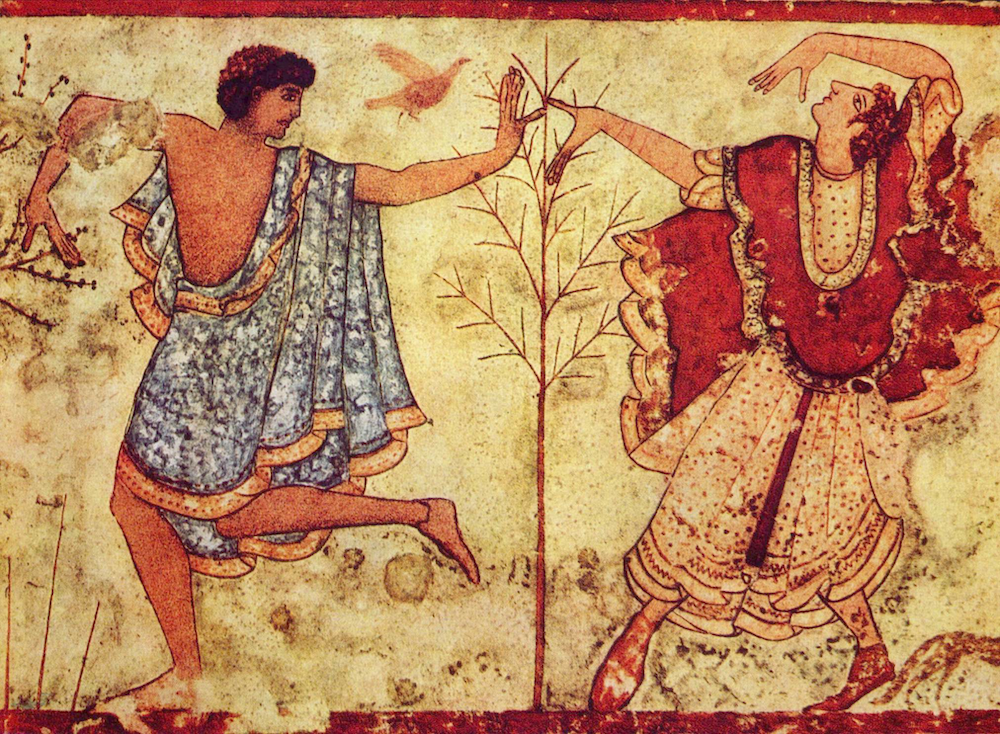
Based on ancient texts, we know that outsiders found Etruscan women remarkable and different. My favorite thing that Theompompus of Chios found offensive about Etruscan women is that, according to his own words, “They make toasts to anyone they choose!”
Imagine a scene of Etruscan women in a mixed-gender banquet, dressed in clothing that might have been considered indecent by Greek standards, dining not only with their husbands but with any one of their guests. And, heaven forbid, they even made toasts to anyone in the room that they chose. Theopompus of Chios also complains about Etruscan children running rampant at these social events.
Hmmm… People eating delicious food, drinking, making toasts, playing music, children running around everywhere, living just as their parents live. If you’ve ever been a guest at an Italian wedding or even a neighborhood dinner party, this scene sounds like things in central Italy may not have changed much in 2,000 years! For Etruscan women at least, public, social engagement seems to have been the way of the world.
If you’d like to learn more about this topic, sign up for my free online course on Women in Etruscan Art.
Click here to register for Laura’s free online workshop on Women in Etruscan Art.
Laura Morelli is an art historian and historical novelist with a passion for Italy. You can find much more about what to bring home from Italy in her guidebook series, including Made in Florence and Made in Italy. These books, along with Laura’s Venice-inspired historical novels, including The Gondola Maker, are available in the Italy Magazine shop.
